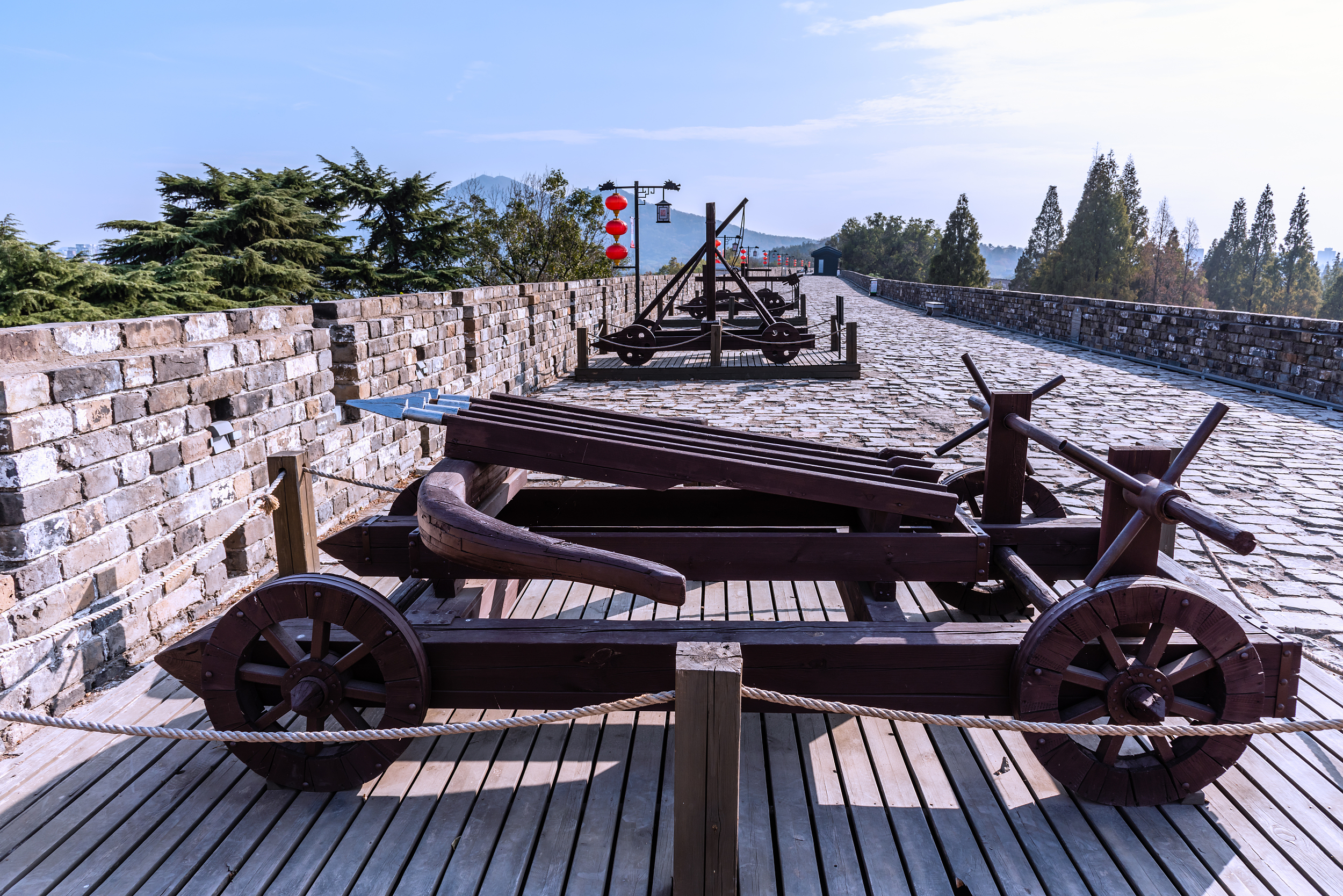Crossbow: Ancient Chinese Machinery Invention
By Bi Weizi

An ancient crossbow vehicle is displayed on the Ming City Wall in Nanjing, China. (PHOTO: VCG)
The use of bow and arrow for hunting and warfare dates back to the Paleolithic period in many parts of the world. Thousands of years ago, the crossbow was then invented by Chinese on the basic bow design, expanding the use of mechanical and hand-held weapons, and revolutionizing the battlefield.
Chinese archaeologists believe that crossbows may have been invented as early as 2000 B.C., based on artifacts such as bones, stones, and shells that may have been crossbow triggers. The earliest hand-held crossbow with a bronze trigger was unearthed in a tomb in Qufu, Shandong province, in the ancient Chinese state of Lu during the Spring and Autumn Period (771-476 BC).
The crossbow is composed of three parts: the bow, the tiller and the lock. The bow, also called the prod, is mounted on the tiller, which is usually the wooden body, and the lock refers to the release mechanism, including the string, sears, trigger lever and casing. When the shooter releases a mechanism, the crossbow fires arrows or bolts propelled by the mechanical energy of the previously taut bowstring.
Developed from the traditional bow, the crossbow is capable of firing multiple arrows with greater power and precision. The locking mechanism allows crossbow shooters to handle more draw weight and maintain the draw with significantly less physical exertion, by limiting the shooter's stamina to pulling the string into the lock and then releasing the shot by depressing the trigger.
The crossbow was an important factor in the success of the Chinese states against foreign armies. Western scholars believe that the Chinese crossbow in the Warring States period can be compared with modern rifles, and it is one of the outstanding achievements of ancient engineering technology, reflecting the excellent scientific and technological level of ancient China.






